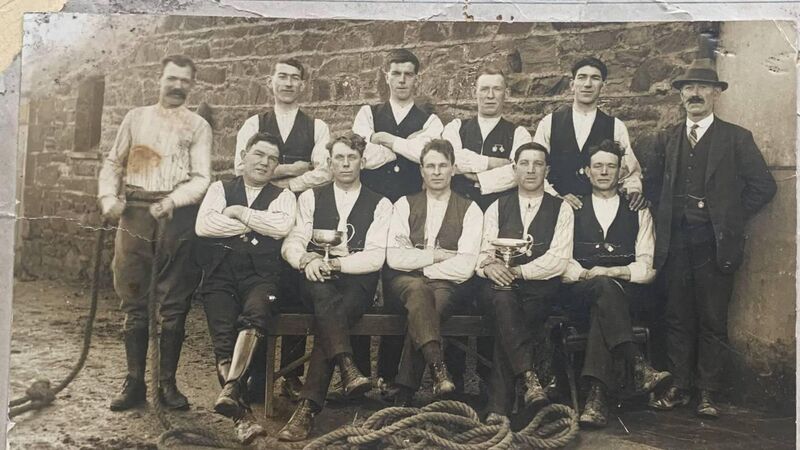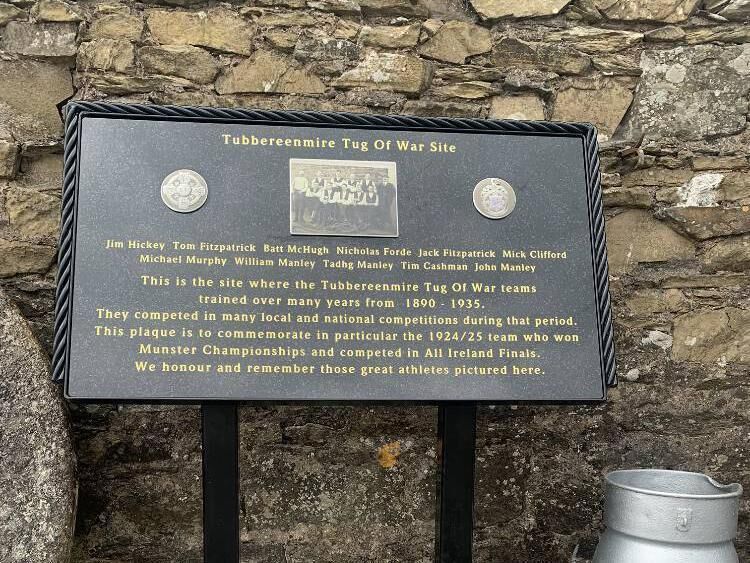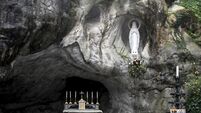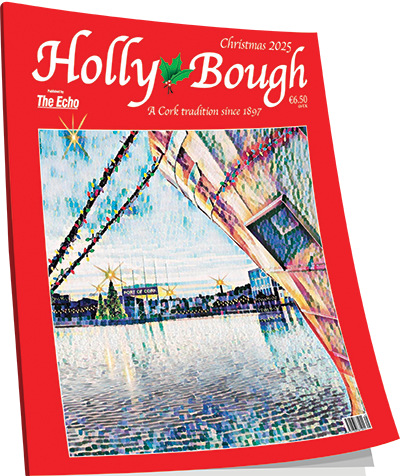John Arnold: Cork tug o’ war team who were a mighty force

“Glanmire - Glean Maghair, and Tubbereenmire - Tobairin Maghair, both derive their names from some personage, cleric or chief - who he was is not known,” he wrote.
Well that’s one theory.
Others say Tubbereenmire is Tobairin Muire, or Mary’s Little Well, whilst another suggestion is that the well at the crossroads took its name from priest of penal times Fr Myers, or Mires.
Fascinating, isn’t it, that a little rural place in the parish of Carrignavar should have so many possibilities as to the origin of its name.
In truth, the name Tubbereenmire could be derived from any one of these aforementioned, or perhaps from an entirely different source.

We were there with about 200 others last Friday night for a unique and memorable event. A century ago, this crossroads and Hickey’s forge nearby were, you could say, the ‘headquarters’ of a very famous sporting club.
Formed in the 1890s, Tubbereenmire Tug-of-War Club was, by the 1920s, one of the most famous in the land.
It’s easy to describe their fame as being national, but it’s pure true. Their pulling power was not simply on the rope, but they were capable of attracting huge crowds to carnivals, church fetes and the like.
It’s said that the sport of tug o’ war was introduced into Ireland in the 1800s and was used particularly in the training of the police and constabulary, with Inter Police District competitions being very popular amongst RIC members.
Strange, then, wasn’t it, that a sport connected with ‘foreign rule’ and the ‘establishment’ should quickly become part and parcel of Irish life.
The basis of the sport is simple enough, eight on a team at either side of a heavy rope. The goal is to pull the opposing team across a designated centre line, or until a certain part of the rope (often a marker or a feather) crosses the line. It seems simple enough, but great strength is needed.
So, a group of young men gathered a few evenings a week near Hickey’s forge and soon the all-conquering Tubbereenmire Tug of-War club was on the road and on the rope.
Not alone were they able to put out a team of eight - they also had a second and a third team! The Cork Summer Show in 1924, had tug-of- war contests on the evenings of Wednesday, July 9, and Thursday, July 10. The ‘draw’ was follows;
Doyle’s v Tubbereenmire (No 2)
Asylum v Independent Ex-servicemen
Fords (B) v Tubbereenmire (No 1)
Cullinane’s v Fords (A)
Tubbereenmire (No 3) a bye.
Admission to the show and the tug o’ War was 1/- or by ticket.
Tubbereenmire’s top team won that competition. They won County and Munster Championships and competed in All Ireland finals.
One of their most prized victories came in Riverstown Sportsfield in 1924 when, captained by Nicholas Forde they captured a magnificent silver cup put up by the Sarsfields Hurling Club.
I took part in two pulls myself in our Macra na Feirme days and ’twas no joke - especially if the two teams were evenly matched - two good teams or two woeful teams! Keeping the strain on for five minutes or more is tough, very tough - especially with no training done.
Now, generally, the sport was well regulated but often teams would ‘lie on the rope’ and end up on the ground - completely illegal, but a tough task for the referee to adjudicate on!
Pulls were often finished in semi-darkness - it wasn’t unknown for a team to tie the rope to the stump of a tree in the fading light.
At the Fermoy Sports in July, 1925, five teams entered for the tug o’ war - Cork Mental Hospital, Ring, Co. Waterford, Tubbereenmire A and B, and Kilworth.
When the first pull was ‘called’, Ring were not in attendance and it was awarded to the Mental Hospital. On the calling of the second tie, Kilworth did not respond and it was awarded to Tubbereenmire B.
Ring arrived when the second round was being arranged, but the Mental Hospital refused to pull them except in an exhibition contest once the main competition was finished.
Tubbereenmire then refused to pull the Mental Hospital unless they pulled Ring first!
An agreement could not be reached and it was decided to abandon the competition altogether.
As a matter of fact, it was the opinion of the vast majority of the assemblage that such tug o’ war contests should be completely excluded from sports meetings in the future!
Such a policy was not pursued, however, and Tubbereenmire continued to dominate the rope for several years.
On Friday night, a beautiful plaque was unveiled near Hickeys forge to the men who brought such glory to their own place a century ago. Mick Clifford was the coach, with Jim Hickey the anchorman and team-mates brothers Tom and Jack Fitzpatrick, Batt McHugh, Michael Murphy, the Manley brothers John, Tadhg and William and Tim Cashman and Nicholas Forde.
Those outstanding sportsmen were to the forefront until the 1930s. During the war years and 1950s, the sport of tug o’ war in the Cork area was at a low ebb. Then, in the 1960s it took off again. Local carnivals were two-a-penny and hurling tournaments and tug o’ war competitions drew huge crowds.
Keame - between Rathcormac and Glenville - had a great club. In April, 1963, they held a competition for A and B teams. From a ten-mile radius came teams from Tubbereenmire, Conna, Firmount, Watergrasshill, Hag’s Cross, Keame and Kearney’s Cross.
Batt McHugh was a strapping youngster starting off his 40-year tug o’ war career back then. I met him in Tubbereeenmire in Friday night - his stories were legendary! He recalled his first ever ‘pull’ - behind Petey Hurley’s pub in Bridesbridge, near Castlelyons. He was the anchorman and in front of him was the famous Petey O’Driscoll.
Another famous pull in Rathcormac of a Sunday evening lasted an hour and a half - starting at 5pm. When the Angelus Bell rang out, several of the team let go of the rope to bless themselves and then went back heaving once more!
Batt recalled being invited down to the Rose of Tralee Festival in 1974. His Keame team got to the final of the tug o’ war against Kerry side Barraduff. After nine or ten pulls, there was still no winner when one of the Barraduff lads said: “There’s only one way to beat this Cork crowd - take away the rope,” which they did!
That Keame team were beaten the 1974 All Ireland final but won the title in 1975. They represented Ireland in the World Championship in Holland - finishing fourth.
Lads, we heard some great stories in Tubbereenmire on Friday night -it was a great community coming together to celebrate and remember heroes of the past.
Amazingly, there is not a single affiliated tug o’ war club in Cork – how times and pastimes have changed.







 App?
App?







